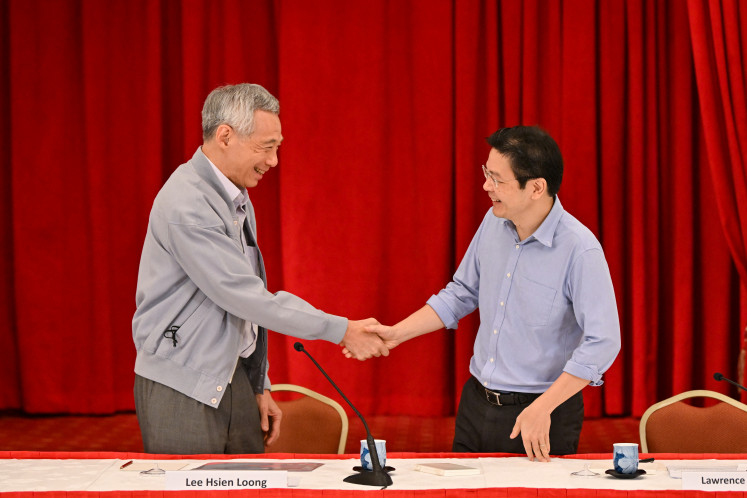'Gambang kromong' sets night at temple to fun music
On Thursday evening, Chinese-Indonesians and native Jakartans (Betawi) played Indonesian and Chinese musical instruments at the 500-year-old Dharma Jaya Temple, locally known as Toasebio, on Jl
Change Size

O
n Thursday evening, Chinese-Indonesians and native Jakartans (Betawi) played Indonesian and Chinese musical instruments at the 500-year-old Dharma Jaya Temple, locally known as Toasebio, on Jl. Kemenangan III in Glodok, West Jakarta.
The Chinese-Indonesians played tehyan (Chinese violin-like instrument), kendang (drums) and kecrek (metal string instruments), while the Jakartans made music with boning (small gongs), suling (flutes), gambang (wooden xylophones-like instrument) and kromong (set of gongs) on a 10-square-meter stage. Three women wearing traditional kebaya blouses sang on the same stage.
'People call us gambang kromong because we play gambang and kromong,' said Nirin Kumpul, the 65-year-old Betawi artist who leads the ensemble Subur Jaya.
Native Jakartans regard Nirin, as well as other famous Betawi artists such as Benyamin Sueb, Mpok Nori, Nasir and Bokir, as those fighting to conserve their culture.
Vocalist Kosim Balada said that gambang kromong was a blend of Chinese and local cultures. In the fifth century, the Chinese who arrived at Sunda Kelapa Port in North Jakarta brought with them three violin-like instruments: tehyan, kohyan and sukong.
The 56-year-old vocalist said that when the Chinese performed and played their musical instruments, the Betawi asked to collaborate with their own instruments.
Benyamin Sueb, he said, then made the gambang kromong ensemble more popular across the archipelago and overseas by adding modern musical instruments, such as keyboards, guitars and drums.
'If you go to Kampung Melayu in East Jakarta, you will find that most gambang kromong players are Chinese-Indonesians,' he said. His own ensemble's studio is in Pasar Rebo, East Jakarta.
At Toasebio, he said that the temple's officers had asked the Subur Jaya ensemble to perform at the birthday celebration of Cheng Guan Cheng Kun, a heavenly God accompanied by two black dogs.
Kosim said that at the celebration, his ensemble played more than 20 classic Betawi songs, including 'Si Jali-Jali', 'Stambul 2 Dirusakin', 'Lenggang Kangkung' and 'Sang Bango'.
The Subur Jaya ensemble, he said, also played Chinese songs, such as 'Tian Me Me', in addition to popular Indonesian songs, including 'Goyang Oplosan' popularized by Soimah.
He said that his ensemble had brought 14 music players and eight vocalists, adding that they were mostly young people.
'I am so proud that youngsters still love gambang kromong in this modern era,' he said.
Subur Jaya's performance at Toasebio lured people to dance. Dozens of people, not only the temple's congregation, attended the event and danced to the gambang kromong tunes with apparent joy. (alz)









